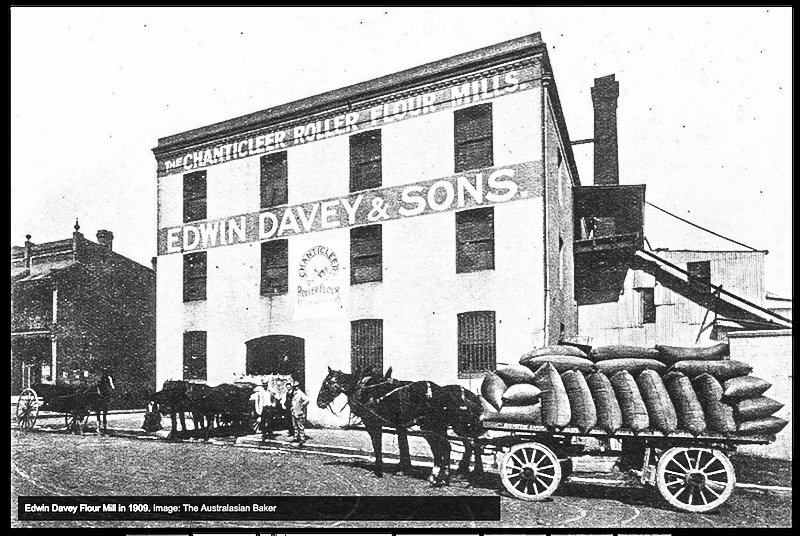Industry > Flour Milling
Flour Milling
Bread was a staple food in Sydney, so Macarthur built a windmill as early as 1807, to grind wheat into flour. That venture was premature, but when the train line from the country reached Pyrmont in the 1840s, millers grasped the opportunity to bring in wheat, grind it into flour, and sell it to the bakers who fed the city. For some years the mills also exported flour to markets in the Pacific.
The bread supply was vital. During the Depression, the State government confiscated flour that was being exported, enraging the millers and sparking a brief constitutional crisis.
The earliest of the new wave of mills was the Victoria Steam Mill, between Engine and Hay Streets. It operated under various names from 1845 until 1908 when it closed to make way for Paddy’s Vegetable Market.
An entrepreneur named Stephen Freeman bought several sites in Glebe, Ultimo and Pyrmont, one of which became the Ultimo Roller Flour Mills on Allen Street, around 1895.
Gillespie Brothers’ Anchor Flour Mill began to operate in a simple factory in Barker Street in 1893. In 1920 they began to build a new mill in Union Street. The four-storey building opened for bulk handling the following year. Over the next sixty years ownership changed as the flour milling industry adapted to competition, the decline of the export market, and changing conditions in the domestic market. The mill was closed and demolished in 1992.
Edwin Davey & Sons developed a property on Allen Street as Chanticleer Roller Flour Mills in 1901. Technically advanced, it flourished, and doubled its capacity, then expanded again in 1906. In 1911 the mill was damaged by fire, and had to be rebuilt. The mill had its own spur line from the main line of rail, leading to a weighbridge. The mill closed in 1992. Twenty years later the site was redeveloped as Harbour Mill apartments, retaining several outer walls and the weighbridge which give an impression of the mill in its glory days.
White Rose Flour Mills operated in Bulwara Road, Ultimo, from 1925 to 1963, when the company relocated to Homebush and the building was redeveloped as the Gazal Building.
James Budge had a mill at 745 Harris Street. It was listed in the 1891 Trade Directory, but it had disappeared by 1903.
Flour mills employed many people, and the jobs were welcome. On the other hand (like timber yards and wool stores) they increased the risk of fire in densely populated Pyrmont.
Edwin Davey Flour Mill in 1909. The Australasian Baker
Related Items
Sources
John Broadbent, Transformations: ecology of Pyrmont peninsula 1788-2008
Tony Burgess, “Milling in Sydney City” in ATMA: Quarterly Newsletter, The Grind, December 1998

















